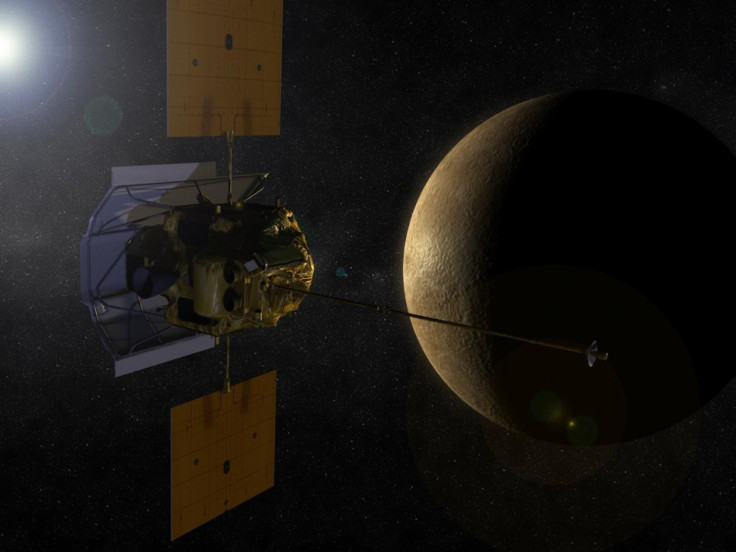NASA Probe Enters Orbit Around Mercury

NASA's MESSENGER spacecraft successfully entered orbit Thursday night at abut 9 p.m. Eastern time, marking the end of a six and a half-year journey to the solar system's innermost planet.
Cheers went up from mission control when the announcement came that the space probe was sending high-speed telemetry back to Earth.
MESSENGER fired its main thruster at about 8:45 p.m., slowing down so it could be captured by Mercury's gravity and enter a 12-hour orbit around the planet. It then turned its main antenna back towards Earth. The next few weeks will be spent making sure the spacecraft's systems are all functioning.
MESSENGER, for Mercury Surface, Space ENvironment, GEochemistry and Ranging, is one of the more durable space probes NASA has built. It has to withstand temperatures as high as 400 degrees C (752 degrees F) and cold that can reach -170 degrees (-276 F). It is equipped with a sunshade to protect some components.
Getting to Mercury was complicated because the planet's orbit is inclined relative to Earth's, which means any spacecraft needs to either burn more fuel to change the plane of its orbit or use gravity assists. MESSENGER did the latter, swinging by both Earth and Venus to get into position.
Mercury is the closest planet to the sun, completing one of its revolutions in only 88 days. Mercury also spins very slowly, and does so in such a way that a single day on Mercury lasts 176 days -- two of the planet's years. On the surface, the sun would appear to travel from east to west, then jog east, and then start moving west again.
So far the only space probes to get a close look at Mercury are Mariner 10 in the mid-1970s, and MESSENGER as it has passed the planet on previous flybys.
MESSENGER will address several questions. One is why the planet is so dense. Understanding why that is the case for Mercury could offer clues as to how the other planets formed.
Mariner established that the planet has a magnetic field, if much weaker than Earth's. That only opened up more questions, though. Most planetary scientists would say a magnetic field needs a molten or plastic core, along with the planet's own rotation. But there wasn't any evidence that Mercury's core was like that. The surface didn't look like it had been buckled or twisted which would have shown that there was a plastic layer under a crust.
Mercury also has an iron core that is much bigger relative to the planet than Earth's, some 42 percent of the planet's volume. Earth's core is 17 percent of the volume.
There are two major hypotheses. One is that the early sun went through a hotter and more active phase and evaporated the planet's outer layers, leaving what the core of a world that was once much larger. The second is that the outer layers got blown off in a massive impact.
The probe will also investigate what the exact structure of Mercury's core is, and a try to get a more exact picture of the planet's magnetic field than Mariner did. Those two pieces of information will reveal much about how the planet maintains its magnetic field.
MESSENGER will also get a much better visual picture of Mercury because Mariner was only able to see one side. That's because Mercury spins three times on its axis for every two orbits. Mariner happened to pass by when the same side of the planet was in daylight, so it only got pictures of half of the surface. Since MESSENGER will be orbiting Mercury for a year at least, it will get a much closer view and see the whole planet in much more detail. It also has a spectrometer, allowing it to see what the surface rocks are made of.
Because Mercury, unlike Earth, is not tilted relative to its orbital plane, there are areas near the poles where the sun would never clear the horizon. Those areas are a lot colder than the rest of the planet, and covered in a material that is as yet unidentified. Most scientists think it is water. These regions were discovered when ground-based astronomers bounced radio waves off the planet. MESSENGER has what is called a neutron spectrometer, which can detect hydrogen near the surface.
To contact the reporter responsible for this story call (646) 461 6917 or email j.emspak@ibtimes.com.
© Copyright IBTimes 2025. All rights reserved.





















